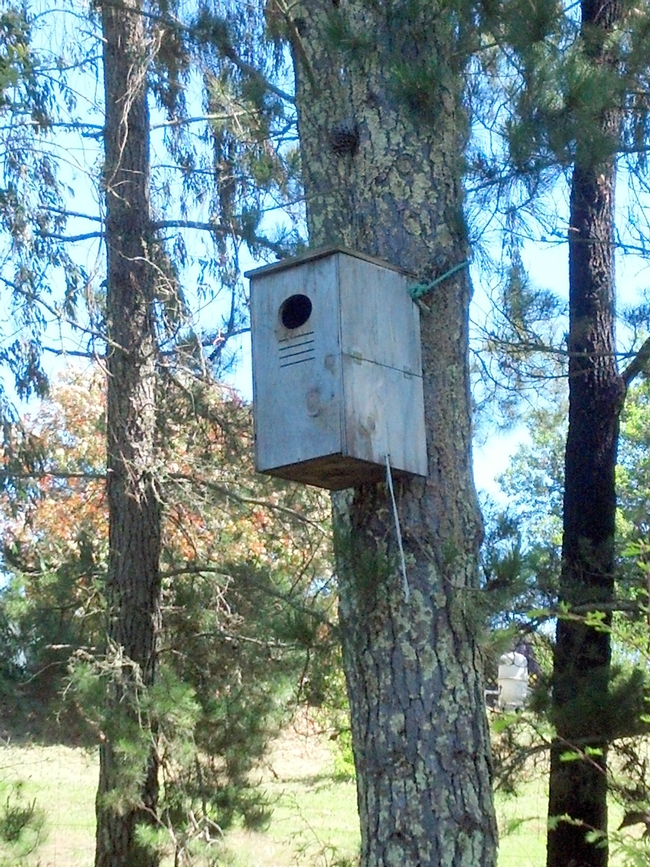
Some homeowners diligently establish an organic landscape using no pesticides or herbicides. They carefully select low-care plants that thrive in their climate and attract birds, butterflies and beneficial insects.
But most of us aren’t quite such purists. We try to encourage the creatures we like or the ones that benefit the garden. We welcome owls that reduce the plant-eating rodent population and bees that pollinate our vegetables and fruits, but we regard yellow jackets and mosquitoes as pests.
Some gardeners may not mind yellow jackets too much. Others are severely sensitive to their stings. Most of us want to use (and be exposed to) as few chemicals as possible, yet we still want an attractive and comfortable yard with reasonable upkeep.
Napa Valley offers a promising climate for achieving most gardeners’ dreams. By selecting California native plants, we can minimize water use, chemical inputs and labor. Creating or restoring natural habitat on our property can enhance our enjoyment of the land and its inhabitants.
Most people “inherit” plants when they buy a property, and typically they keep some, especially the trees. Occasionally, a new homeowner starts with a clean slate. Either way, having a plan is crucial. Good landscape design marries beauty with functionality. You may want a play area, a sitting area, a vegetable garden, and a habitat for birds and butterflies. These desires are all compatible.
If you like to hear songbirds early in the morning, place feeders by the bedroom, bath or kitchen. A welcoming habitat for birds would also include moving water, plants that provide cover and shade, and food sources (often just trees with furrowed bark that hides insects). A shady sitting area that offers a view of a bird feeder or birdbath is a great asset to a yard and a pleasant place to relax in the evening.
Trees of all sizes attract birds. Consider dogwood, oak, mulberry, or any nut or fruit trees. Native shrubs such as coffeeberry (Rhamnus californica), toyon (Heteromeles arbutifolia) and common snowberry (Symphoricarpos albus) provide shelter and food.
Cedar waxwings love mistletoe berries and dogwood berries, and these birds are among our most beautiful.
The following plants are all good hummingbird hosts. The starred plants on the list attract butterflies.
Abutilon (flowering maple)
Acacia
Arbutus unedo (strawberry tree)
*Arctostaphylos (manzanita)
Aquilegia (columbine)
*Asclepias tuberosa (butterfly weed)
*Buddleia (butterfly bush)
Callistemon (bottlebrush)
Campsis (trumpet vine)
*Ceanothus (California wild lilac)
Cercis occidentalis (Western redbud)
Correa (Australian fuchsia)
Crocosmia crocosmiiflora (montbretia)
Eucalyptus
Grevillea
Heuchera (coral bells)
*Heteromeles arbutifolia (toyon)
Kniphofia uvaria (red-hot poker)
*Lantana montevidensis
*Lavandula (lavender)
*Lonicera (honeysuckle)
Mimulus (monkey flower)
Monarda (bee balm)
Penstemon (beard tongue)
*Ribes (currant and gooseberry)
Salvia
Sambucus (elderberry)
*Zuaschneria(California fuchsia)
Many of these plants are California natives. Others are drought-tolerant plants from Australia, which has a Mediterranean climate similar to ours.
Workshop: Napa County Master Gardeners will host a workshop on “Cool Season Veggies” on Sunday, August 18, from 2 p.m. to 4 p.m. at the Yountville Community Center, 6516 Washington Street, Yountville. Grow your own vegetables even when days are short and nights are cold. The key is starting while weather and soil are still warm. Learn which vegetables will thrive in cooler temperatures, how to protect them from heat when they are getting started, and how to time plantings for months of harvest. Register through Town of Yountville, Parks and Recreation: Mail in or Walk in registration (cash or check only).
Garden Tour: Napa County Master Gardeners will host a self-guided garden tour, “Down the Garden Path,” on Sunday, September 22, from 10 a.m. to 4 p.m. Visit seven unique gardens in and around downtown Napa, all maintained by Master Gardeners. Tickets: $25 advance/$30 day of event. Purchase tickets online at http://ucanr.edu/ucmgnapa. For more information about the tour and tickets, visit our web site (address below) or call 707-253-4147. Find us on Facebook under UC Master Gardeners of Napa County.
Master Gardeners are volunteers who help the University of California reach the gardening public with home gardening information. Napa County Master Gardeners ( http://ucanr.org/ucmgnapa/) are available to answer gardening questions in person or by phone, Monday, Wednesday and Friday, 9 a.m. to Noon, at the U. C. Cooperative Extension